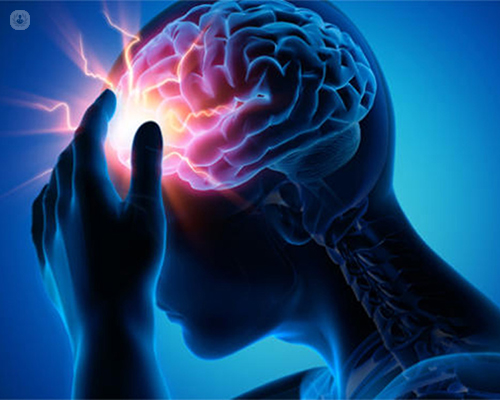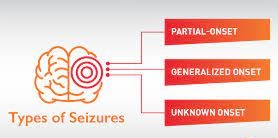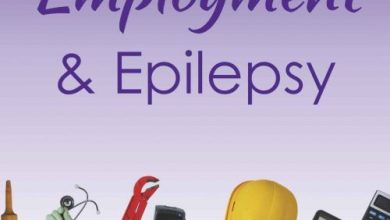
Seizures are a common symptom of epilepsy, a neurological disorder that affects millions of people worldwide. A seizure occurs when there is an abnormal electrical activity in the brain, causing a range of physical and behavioral symptoms. There are several types of seizures, each with distinct characteristics and effects on the body. Understanding the different types of seizures is crucial for proper diagnosis, treatment, and management.
Seizures, also known as convulsions or fits, are sudden and involuntary movements or changes in behavior, caused by abnormal electrical activity in the brain. It can vary in severity and duration, and can be caused by a variety of factors, including epilepsy, brain injury, fever, or drug or alcohol withdrawal. In this article, we will discuss the symptoms, different types of seizures and their characteristics.
Types of Seizures:
1. Focal Seizures:
Focal seizures affect one side of the brain and can cause a range of symptoms depending on the location of the abnormal electrical activity. These seizures are further classified into:
Simple Partial Seizures (SPS)
These seizures cause localized symptoms such as numbness, tingling, or weakness in a specific area of the body.
Complex Partial Seizures (CPS)
These seizures cause confusion, disorientation, and loss of consciousness, often accompanied by automatisms (involuntary movements).
Secondary Generalized Seizures
These seizures start as focal seizures but spread to both sides of the brain, causing a generalized seizure.
2. Generalized seizures:
Generalized seizures are the most common type of seizures and affect both sides of the brain. There are six subtypes of generalized seizures:
Absence seizures
Absence seizures, also known as petit mal seizures, are characterized by a brief loss of consciousness and a blank stare. These seizures typically last for only a few seconds and are most common in children.
Tonic seizures
Tonic seizures are characterized by stiffening of the muscles in the body, and can result in the person falling to the ground. These seizures can last for up to 20 seconds.
Clonic seizures
Clonic seizures are characterized by repeated jerking or twitching movements of the muscles. These seizures can last for several minutes.
Myoclonic seizures
Myoclonic seizures are characterized by brief, involuntary muscle jerks or twitches. These seizures can occur in clusters and can last for several minutes.
Atonic seizures
Atonic seizures, also known as drop seizures, are characterized by a sudden loss of muscle tone, which can cause the person to fall to the ground. These seizures typically last for only a few seconds.
Tonic-clonic seizures
Tonic-clonic seizures, also known as grand mal seizures, are characterized by a combination of tonic and clonic movements. These seizures can last for several minutes and can cause the person to lose consciousness.
3. Unknown Seizures:
Seizures that cannot be classified into a specific category are considered unknown seizures. These include:
Unspecified Seizures
Seizures that do not fit into any specific category.
Seizure Disorder (Unspecified)
A diagnosis given when seizures are present, but the specific type cannot be determined.
4. Other types of seizures:
There are other types of seizures that do not fit into the generalized or focal seizure categories:
Infantile spasms
Infantile spasms are a rare type of seizure that occurs in infants. These seizures are characterized by a sudden flexing of the body and are often mistaken for colic or reflux.
Febrile seizures
Febrile seizures are seizures that occur in children with a fever. These seizures are usually harmless and do not cause any long-term effects.
Psychogenic seizures
Psychogenic seizures, also known as pseudoseizures, are seizures that are not caused by abnormal electrical activity in the brain, but rather by psychological factors.
Causes and Triggers of Seizures:
Seizures can be caused by a variety of factors, including:
1. Genetics: Some people may be born with a predisposition to seizures.
2. Head trauma: Injury to the brain can cause seizures.
3. Infections: Meningitis, encephalitis, and other infections can cause seizures.
4. Stroke: Bleeding or blockage of blood vessels in the brain can cause seizures.
5. Brain tumors: Tumors in the brain can cause seizures.
6. Metabolic disorders: Disorders such as hypoglycemia (low blood sugar) and hypocalcemia (low calcium levels) can cause seizures.
7. Medication withdrawal: Stopping certain medications abruptly can cause seizures.
8. Alcohol and drug abuse: Withdrawal from alcohol and drugs can cause seizures.
9. Electrolyte imbalance: Imbalance of electrolytes such as sodium, potassium, and magnesium can cause seizures.
Triggers of Seizures:
- Stress
- Lack of sleep
- Certain medications
- Alcohol and drugs
- Flashing lights or certain visual stimuli
- Certain sounds or music
- Hormonal changes
- Menstruation
- Pregnancy
Symptoms and Diagnosis of Seizures:
Symptoms of seizures can vary widely depending on the type of seizure. Common symptoms include:
- Convulsions or shaking
- Loss of consciousness
- Confusion or disorientation
- Numbness or tingling
- Weakness or paralysis
- Vision changes
- Hearing changes
- Speech difficulties
Diagnosis of seizures typically involves:
1. Medical history and physical examination
2. Electroencephalogram (EEG) to record electrical activity in the brain
3. Imaging tests such as CT or MRI scans to rule out underlying conditions
4. Blood tests to check for metabolic disorders or infections
Treatment and Management of Seizures:
Treatment for seizures typically involves medication, but other options may include surgery, dietary changes, and lifestyle modifications.
1. Medications:
– Anticonvulsants (ACs) to reduce seizure frequency and severity
– Benzodiazepines for emergency seizure control
2. Surgery:
– Resective surgery to remove affected brain tissue
– Deep brain stimulation (DBS) to regulate brain activity
3. Dietary Changes:
– Ketogenic diet (KD) to reduce seizures in some individuals
– Modified Atkins diet (MAD) for similar effects
4. Lifestyle Modifications:
– Stress management techniques (e.g., meditation, yoga)
– Regular sleep schedule and adequate rest
– Avoiding triggers (e.g., flashing lights, certain sounds)
Lifestyle Changes and Self-Care:
In addition to medical treatment, individuals with seizures can take steps to manage their condition and improve overall quality of life:
1. Seizure diary: Keeping a record of seizures to track patterns and triggers
2. Emergency planning: Informing family, friends, and coworkers about seizure first aid
3. Support networks: Joining support groups or online communities for connection and resources
4. Self-care: Engaging in activities that bring joy and relaxation (e.g., hobbies, exercise)
5. Education and awareness: Learning about seizures and sharing knowledge with others
Conclusion and Future Directions:
Seizures are a complex and multifaceted condition, requiring comprehensive treatment and management. While significant progress has been made in understanding and treating seizures, further research is needed to:
- Develop more effective and targeted treatments
- Improve diagnosis and monitoring techniques
- Enhance quality of life for individuals with seizures
- Increase awareness and reduce stigma surrounding seizures
By continuing to advance our understanding of seizures and their treatment, we can work towards a future where individuals with seizures can live full and active lives, free from the fear of seizures.




